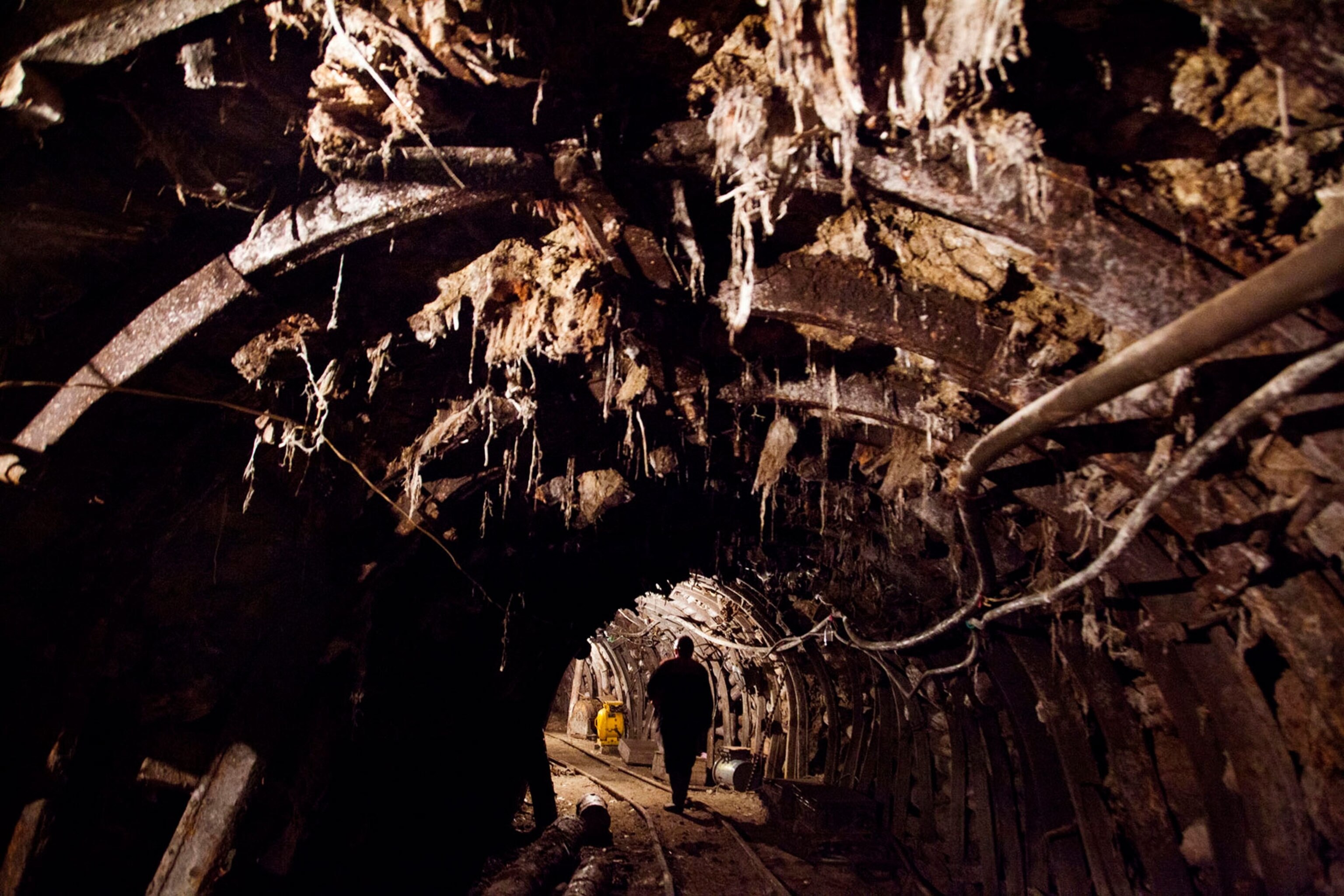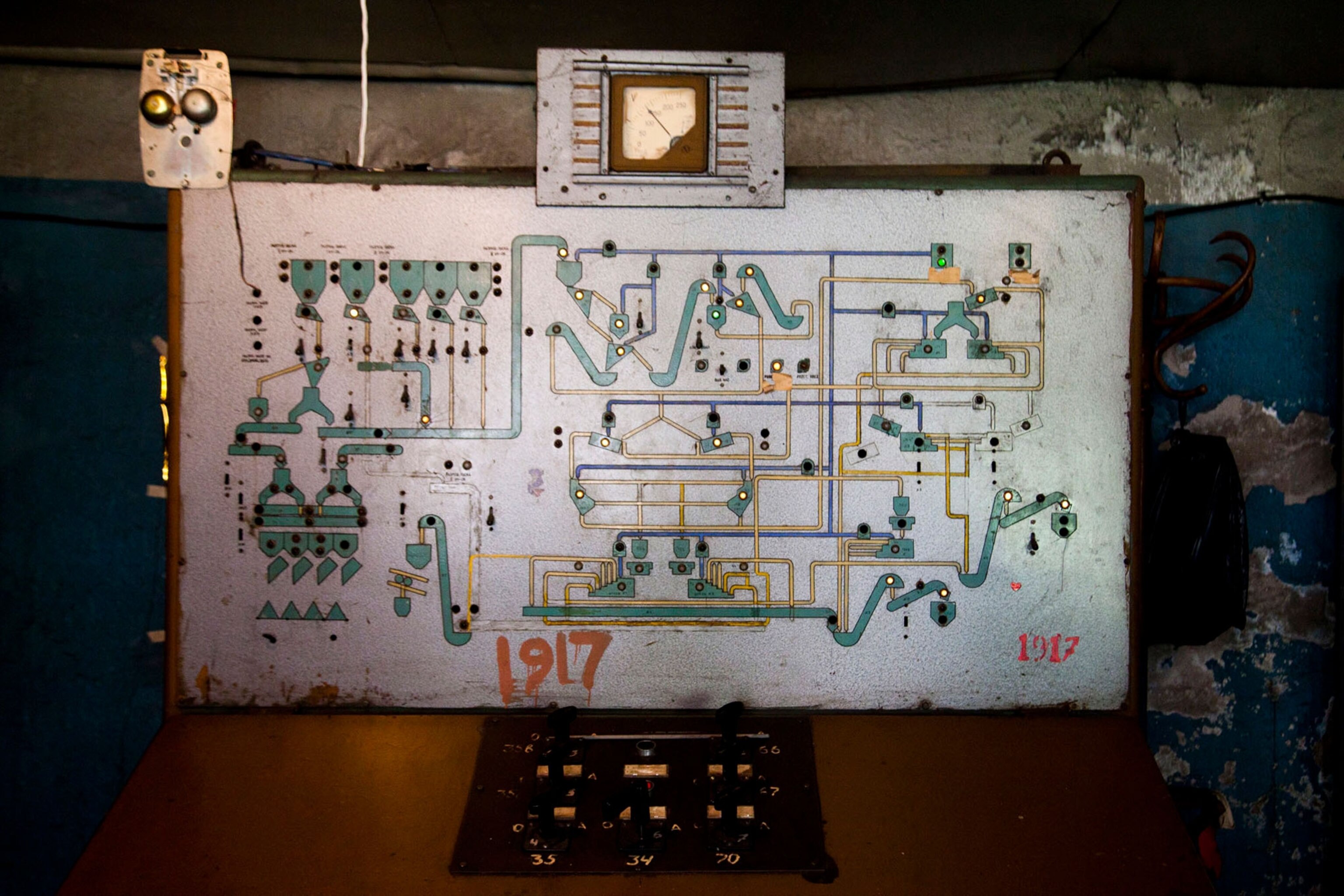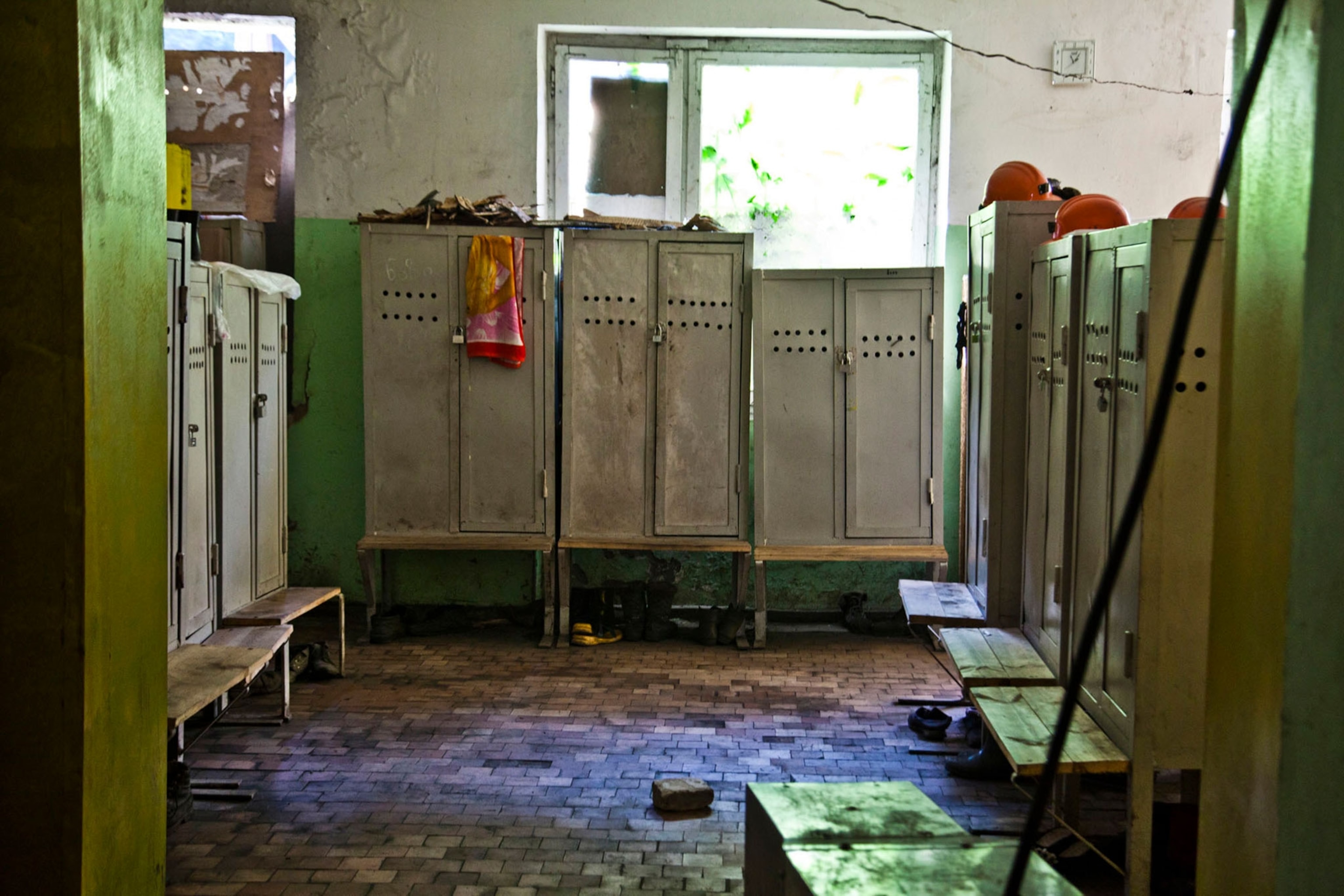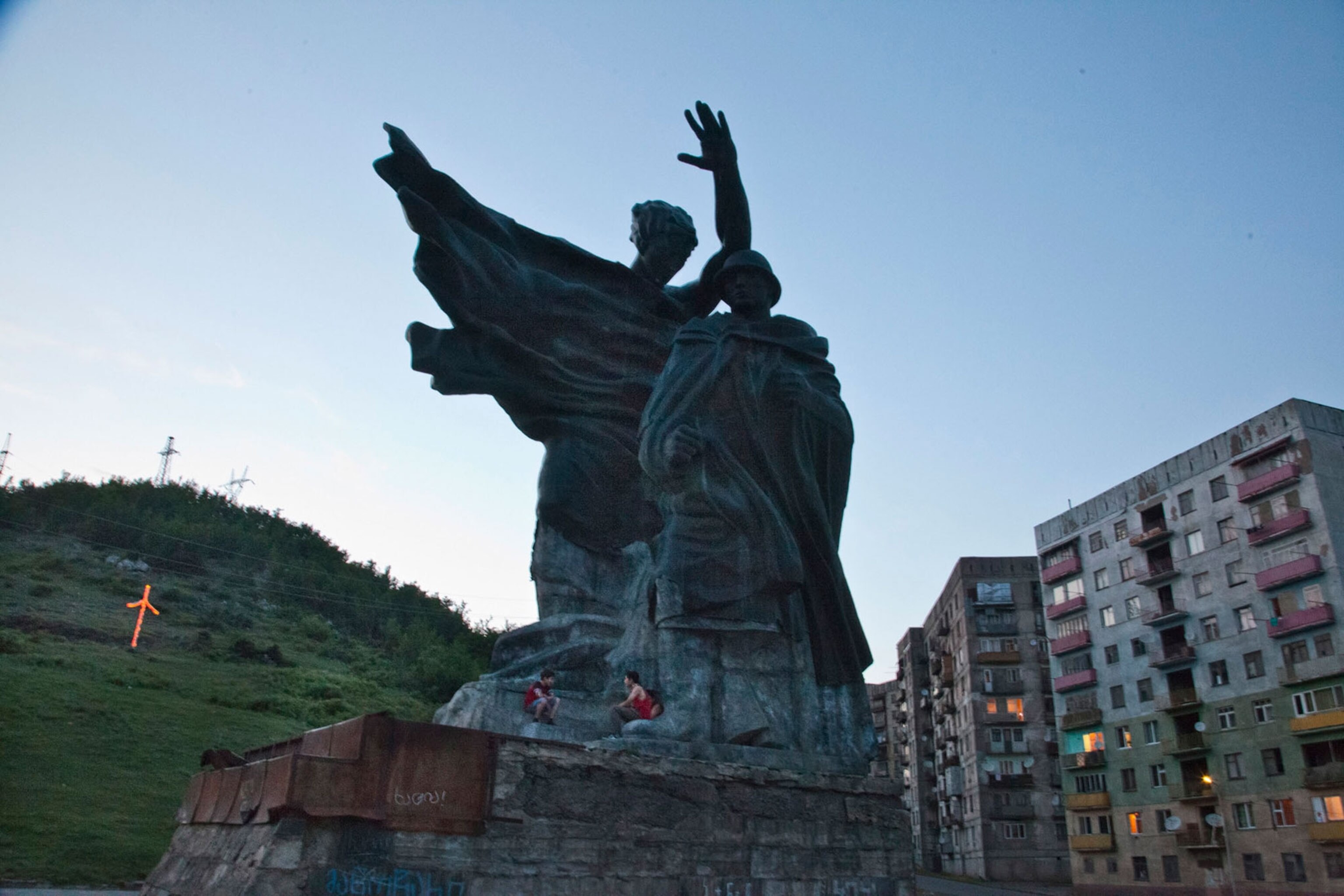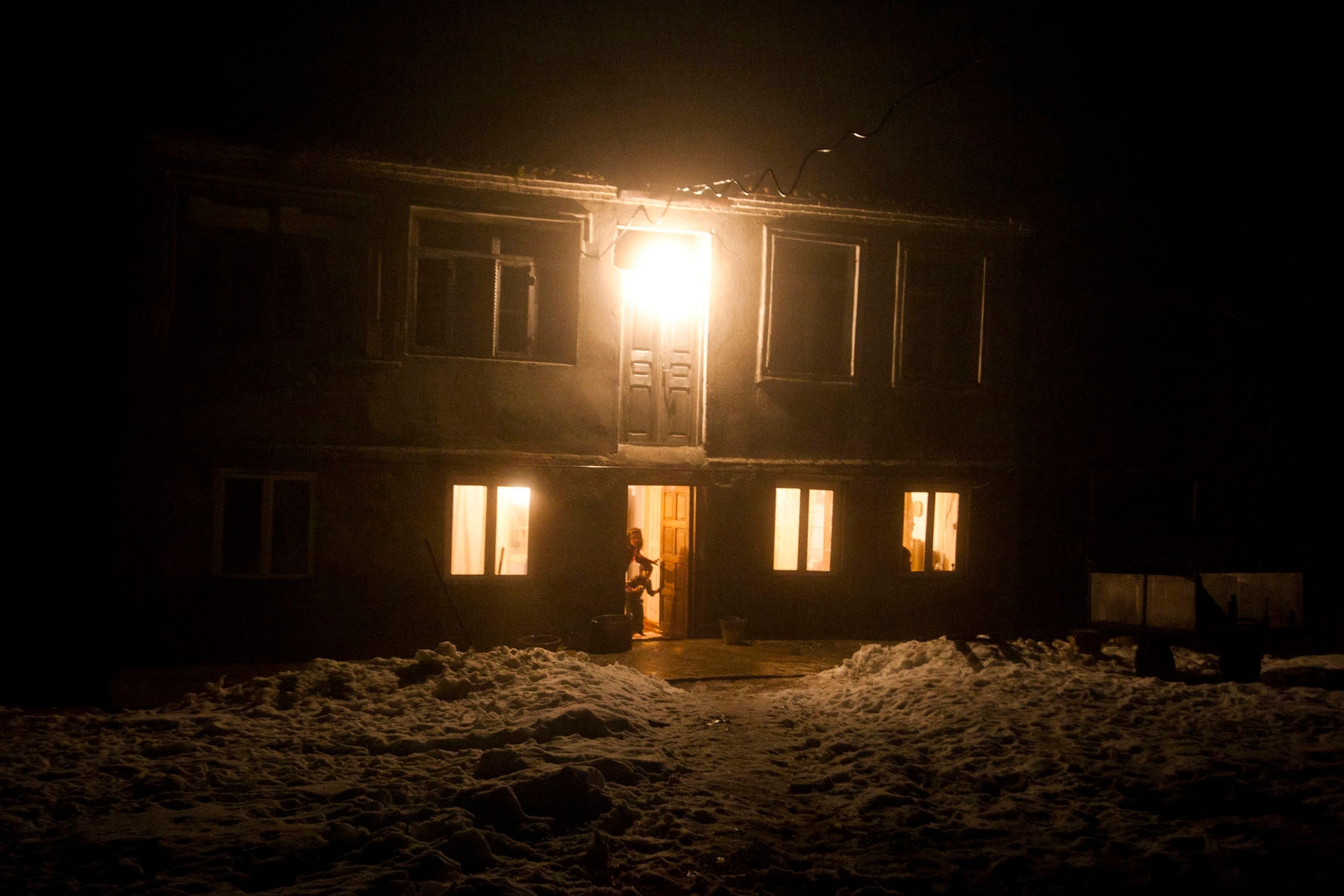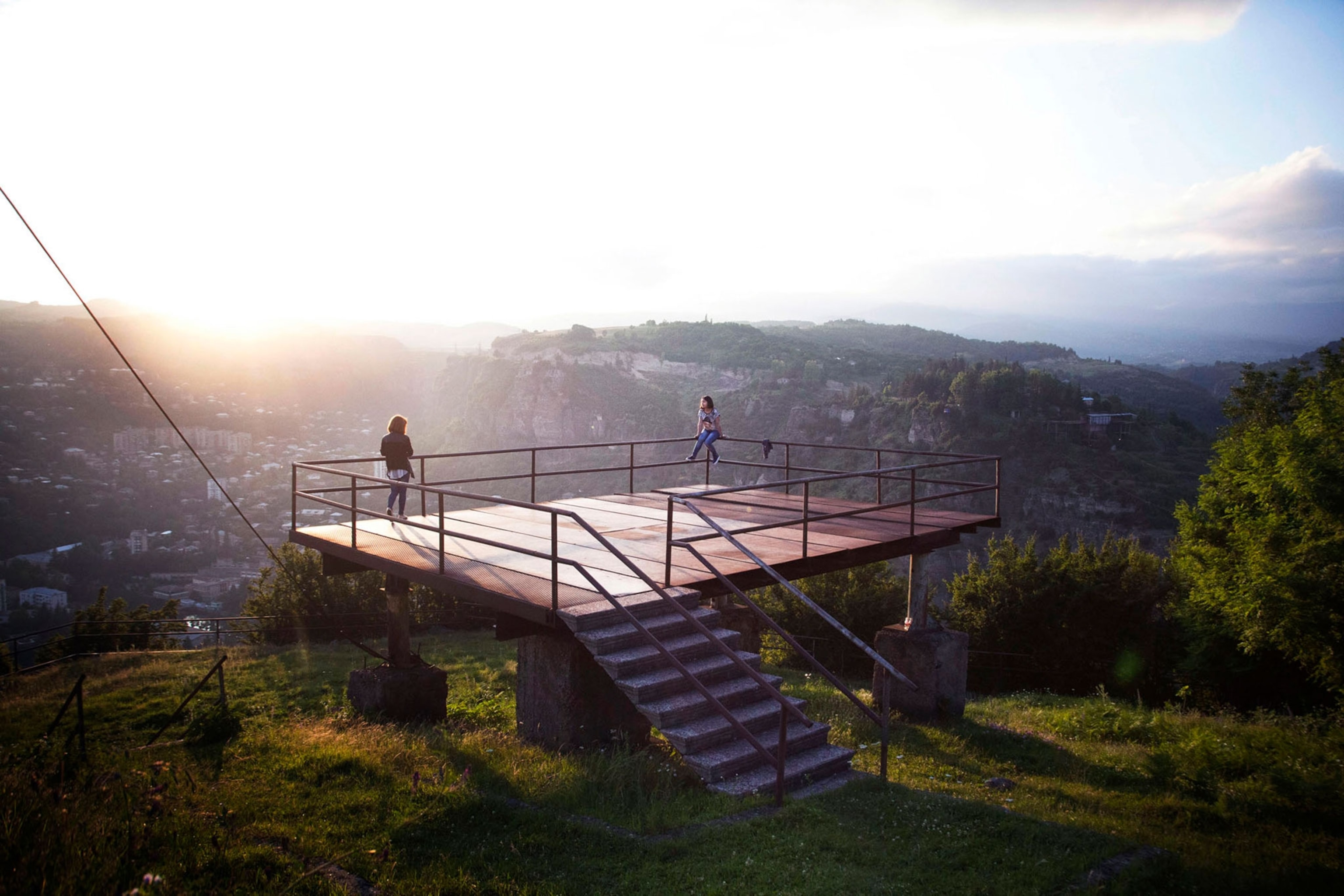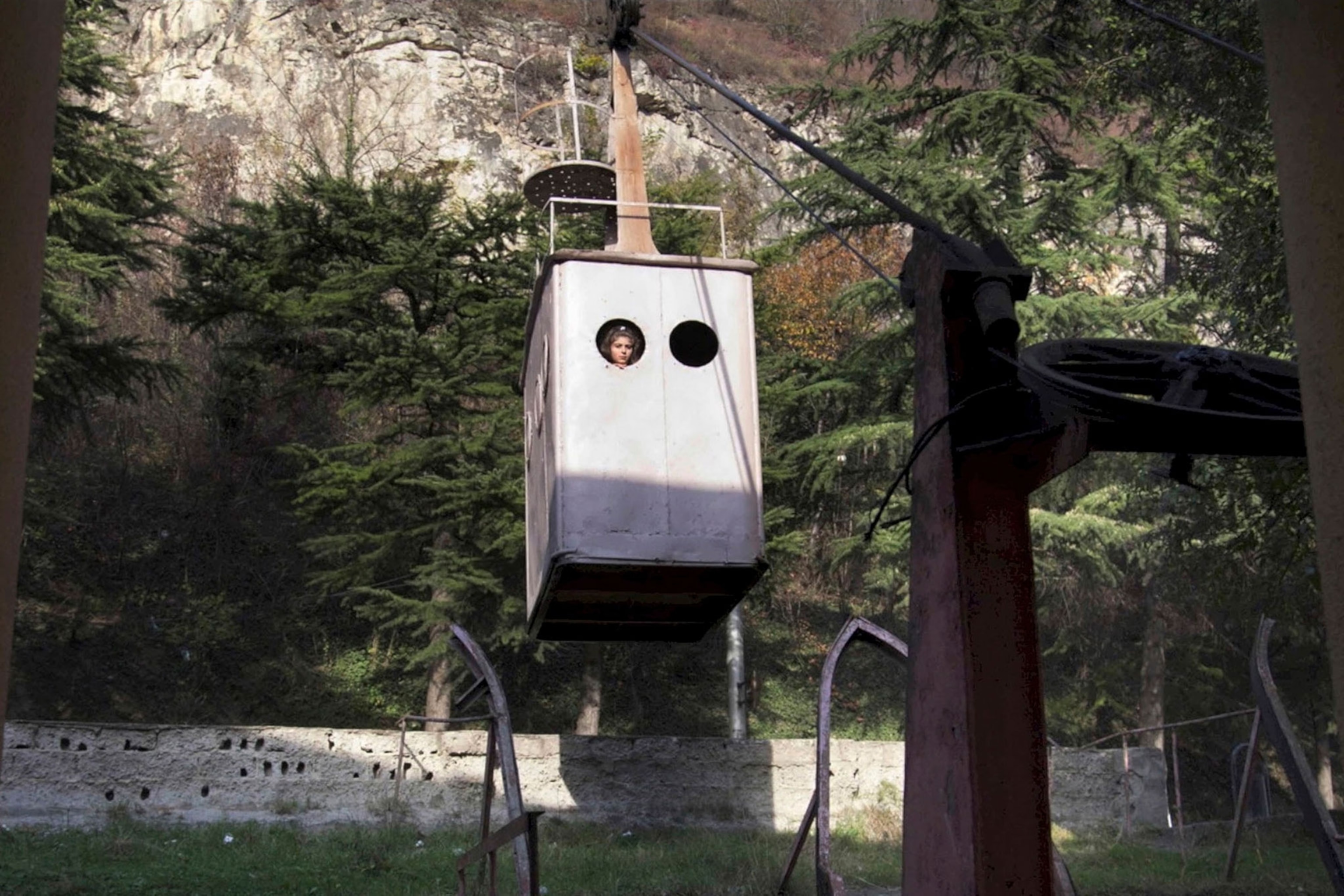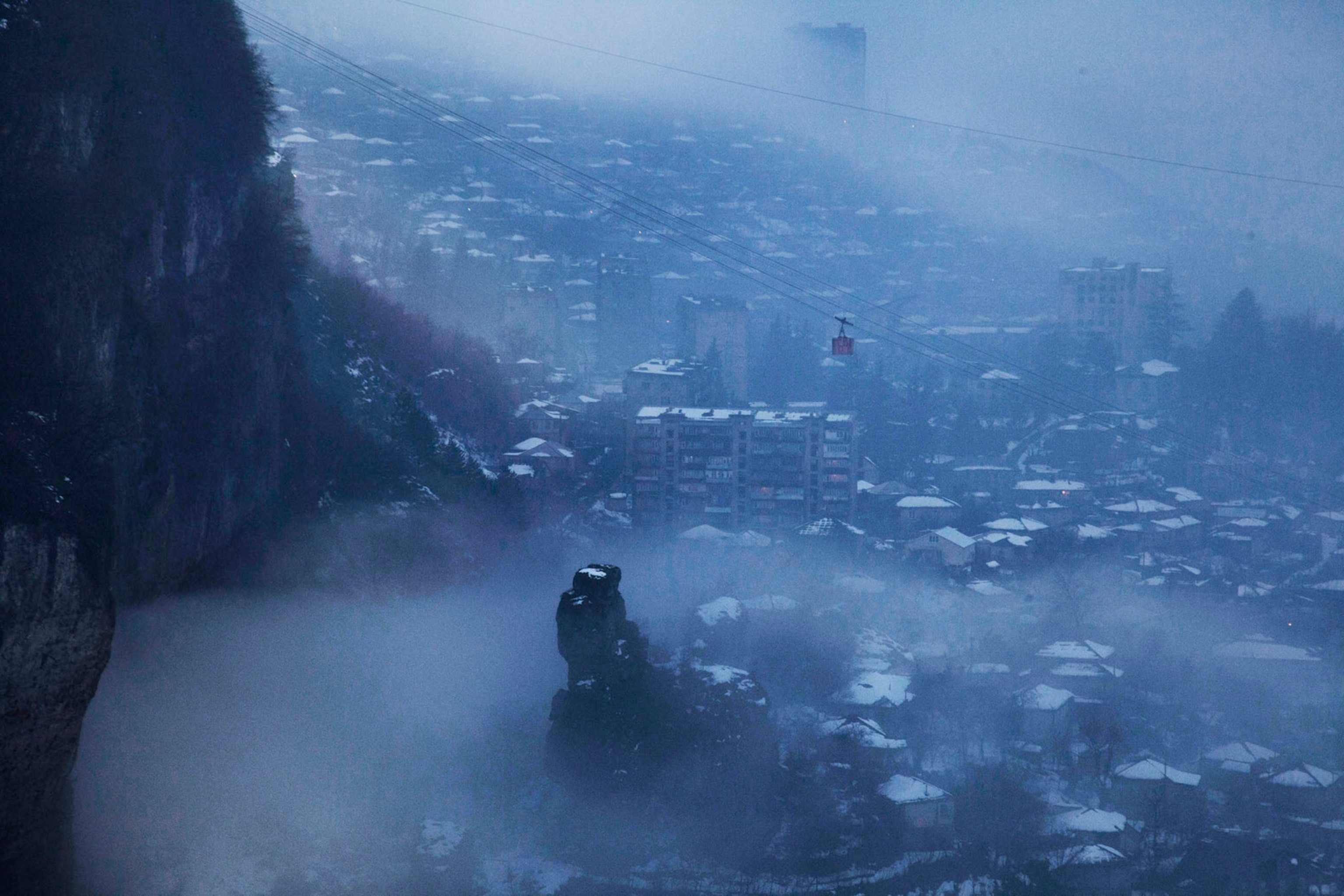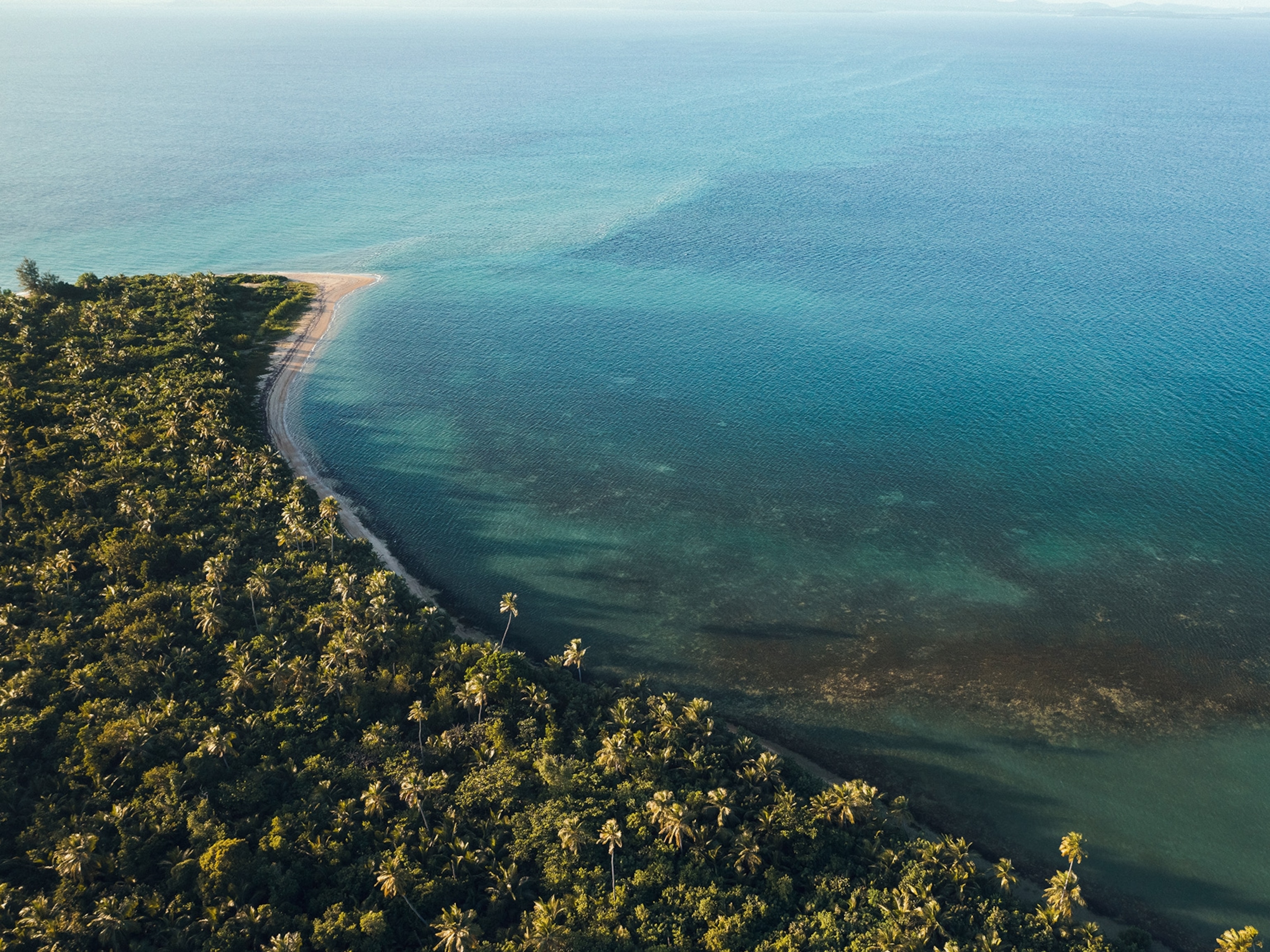
Mountains Offer No Solace in this Dying Soviet Mining Town
With the heyday long over, miners struggle to make a living in the Caucasus.
It took Georgian photographer Daro Sulakauri approximately 35 minutes to reach the manganese ore mines in the heart of the mountain. Donning a safety helmet, she stepped into a rail car for the 13-kilometer-long ride alongside miners who have one of the most hidden jobs in the world.
The tunnel narrows suddenly at some turns which makes leaning from the car dangerous. At times there is pitch darkness. But it was the air quality inside the mine—heavy, humid, oppressing—that struck Sulakauri the most. “Just stay calm and you’ll get used to it,” the seasoned miners reassured her.
The mines are located in Chiatura, Georgia, home to the largest manganese reserve in the Caucasus Mountains. During Soviet times, the extraction of manganese ore was a thriving business. When the regime collapsed in 1991, a steep economic decline ensued, harshly impacting the industry. As of 2016, there were just over 3,000 workers in Chiatura’s seven mines and eight quarries.
Aside from the tunnels and mines dotting the hills, a system of rusty cable cars is another landmark. The outdated car network, also known as the “rope road,” climbs the city's vast gorges. Built in Stalin’s era, the network transported miners up and down the cliffs. Today, the cars also transport locals, factory workers, and tourists. Built in 1954, the network hasn’t been revamped once.
While Sulakauri was first attracted to the city’s surreal atmosphere, her interest soon shifted to the more concrete labor conditions miners endure.
Miners receive a mere salary of about 700 Georgian lari a month (about 290 USD), says Sulaukari. And work with few protections against injury or death. Unions have little power, labor inspections are often corrupt, and strikes produce few improvements.
Many of the miners live in homes nestled on the slopes of the mountain. To facilitate excavation, explosives are detonated in the tunnels. The shock waves damage the houses’ foundations. As Sulakauri’s photos testify, walls rip like cardboard panels. Floors and roofs weaken. “To feed their families, they are digging and exploding under their own homes, in the search for manganese,” Sulakauri says.
Women also work in the factories cleaning and processing ore. The multi-story buildings on a plateau above the city resemble a Communist-era ghost town. Basic security and health conditions are ignored, heat and electricity are scarce, and water infiltrates the rooms. “There are giant holes in the roof, floor, walls,” an article published in 2015 on Open Democracy reports—“It is raining inside.”
In the valley, the city is often coated in a layer of grimy dust floating down from the open pits. “The dust sometimes is visible when you walk in the street,” Sulakauri says. “[Even] when there is good weather . . . You can feel the manganese . . . It's everywhere in the city.”
With her ongoing project “Black Gold,” Sulakauri’s photographs encapsulate all of the the above. The eeriness of the city shrouded in fog parallels the eerie reality of crumbling walls and miners huddled in rusty trains, creating a sense of abandonment and neglect.
In more blithe moments, we catch a glimpse of the curiosity and hope of a timid teenager, engaging the viewer in her daily commute on a cable car, or we peek at two sisters playing on a concrete platform with the vast valley yawning before them.
The result is narrative constructed by the stories that moved Sulakauri the most, and motivated her to raise awareness of the conditions these miners, and locals, endure. “It really touches you when you go inside [the mines] and you see how they work,” she says. “I really feel that I have to tell the story because it's so hidden.”





